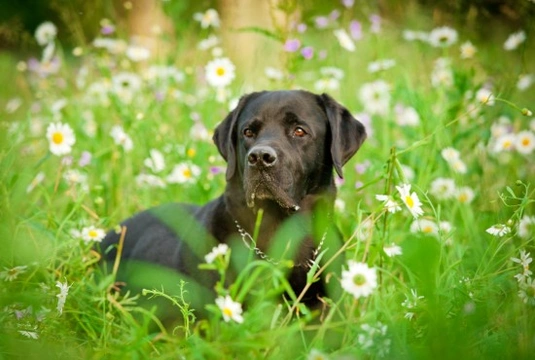Pets
Pets for studWanted petsBreedersAccessories & services
Knowledge hub
Support
Support & safety portal
Protecting your dog against biting and stinging bugs
Most of us have been stung by an insect such as a bee or a wasp at least once in our lives, and once is usually enough to ensure that we spend the rest of our lives actively avoiding a repeat performance! Being bitten or stung by a biting insect is usually highly irritating and often rather painful, but can also potentially prove dangerous or even life threatening to people who find themselves allergic to the venom of the bite in question as well.
Just as is the case with people, bites and stings are likely to prove painful, irritating and even potentially dangerous to your dog as well. However, unlike people, dogs do not know well enough to leave buzzing insects alone, and may even go so far as to chase and try to eat flying bugs such as wasps, which understandably, can end very badly for both parties!
Added to the unpleasantness that accompanies stings on dogs, dogs are also much more sensitive to stings and venom than people, and being stung more than once can actually have a significant effect on your dog’s kidneys, potentially causing failure or lasting damage.
So, is there anything that you can do to protect your dog against stinging and biting insects? Read on to find out!
Don’t inadvertently attract stinging insects
While wasps, bees and other stinging insects may appear to be everywhere that you turn during the summer months, they are generally actively attracted to some things rather than others, which can make them more likely to hang around! Flowers that produce pollen are of course popular with bees and other flying insects, so be careful of what you plant in your garden, and try to stick to varieties that do not attract wasps. The same goes of course for any cut flowers that you bring into the home too!
Don’t forget that if you go walking in the country, in the park or even past other people’s gardens, you might well find yourself surrounded by a heady selection of flowers too, so try to avoid walking your dog in areas where you see a lot of bees and wasps congregating regularly.
If you are eating or having a drink outside, wasps and bees will normally be keen to share! Anything sugary, sweet or aromatic can attract bugs, and this does not just mean lemonade and ice cream- sweet chilli, barbecue sauce and other glazes are high in sugar, and will attract bugs too! If you are barbecuing or eating and drinking in the garden when your dog is around, set up a wasp trap some distance from where your dog is to try to draw the bugs away, and keep your dog away from anything that proves to be very appealing to bugs!
Scented body lotions, perfumes and deodorants also attract bugs, as do brightly coloured fabrics and clothing, particularly in the colour yellow!
Actively repelling insects
As well as minimising the appeal to flying insects of the environment around your dog, there are also several steps that you can take to actively repel bugs as well! Use insect repellents on yourself and possibly your dog, and think about using products that will repel bugs, such as a citronella candle or spray. Be wary of using lethal insect sprays around pets, as these can be harmful to your dog as well. Electronic fly swatters, fly paper and other traps can help to minimise the amount of bugs around too.
If you like to have lots of windows open at the time of year that flying bugs are rife, consider installing mesh screens to let the breeze in but keep the bugs out. Finally, try to train your dog not to go after or chase flying insects! Many dogs think that this is an excellent pastime, and will snap at flying bugs such as flies and wasps... But may soon find that they have bitten off more than they can chew!
What to do if your dog is stung
If your dog is stung or bitten by a wasp or other insect, you will probably know all about it as your dog is likely to yelp in pain or shock!
While stings can be potentially serious for pets, it is important to keep your calm and assess the wound, as not all stings will turn out to be a big deal.
If there is still a sting present and visible on the skin, such as if your dog has been stung by a bee, try to remove this carefully with tweezers or flick the sting out with your nail, taking care not to pinch the venom sack, as this will serve to inject the venom further into your dog.
For other stings where the damage has already been done, apply a soothing, neutralising compound to the wound, such as vinegar or a paste of baking soda, and monitor the wound to ensure that it goes down on its own and does not become infected. You can also use an icepack to reduce swelling.
If your dog has been stung more than once, you should pop them along to the vet for a check up, as multiple stings may present a risk to your dog’s kidney function and can prove potentially serious.



